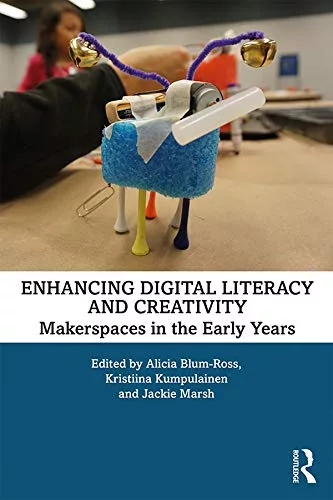HTML Headings:
Enhancing Digital Literacy and Creativity: Makerspaces in the Early Years
The Benefits of Makerspaces in Early Education
1. Developing Digital Literacy:
Makerspaces provide young children with the opportunity to explore and engage with various digital tools and technologies. By using devices such as tablets and computers, children learn how to navigate digital platforms and apps. This builds their digital literacy skills, which are essential in today’s technology-driven world.
2. Fostering Creativity and Innovation:
Makerspaces in the early years encourage children to engage in open-ended play and creativity. Through hands-on activities and problem-solving challenges, children learn to think critically and find innovative solutions. Makerspaces provide a safe environment where children can experiment, take risks, and explore their imaginations, fostering a sense of creativity that can be carried over into other areas of their lives.
3. Building Collaboration Skills:
Makerspaces promote collaborative learning and teamwork. Children in these spaces often work in groups, sharing ideas and resources to complete projects. Collaboration helps children improve their communication skills, learn to work together, and appreciate diverse perspectives. These are crucial skills for success in the digital age, where collaboration and teamwork are highly valued.
Components of an Effective Makerspace in Early Education
1. Diverse Tools and Materials:
A well-equipped makerspace should have a wide range of tools, materials, and technologies that cater to different interests and preferences. This could include 3D printers, robotics kits, craft supplies, building blocks, and more. The availability of diverse resources allows children to explore and engage with various mediums, enabling them to develop different skills and interests.
2. Designated Space:
Creating a dedicated space for a makerspace within the early education setting is crucial. This space should be designed to be flexible and adaptable, allowing for easy reconfiguration to accommodate different activities and projects. It should also be safe and accessible for young children, with appropriate storage for materials and tools.
3. Educator Support and Guidance:
Teachers play a vital role in facilitating and guiding children’s experiences in the makerspace. They should have a good understanding of the tools and technologies available, and their potential for enhancing learning. Educators can provide scaffolding and support, ensuring that children are using the tools safely and effectively. They can also encourage critical thinking and problem-solving skills by asking open-ended questions and promoting reflective discussions.
Incorporating Makerspaces into Early Education Curriculum
1. Integrated Approach:
Makerspaces should be integrated into the overall curriculum, rather than treated as separate entities. This ensures that children can transfer the skills and knowledge gained in the makerspace to other areas of their learning. For example, activities in the makerspace can align with math, science, or literacy standards, reinforcing concepts taught in the classroom.
2. Project-Based Learning:
Project-based learning is an effective way to incorporate makerspaces into the early education curriculum. By engaging in hands-on, collaborative projects, children can apply their skills and knowledge in a meaningful context. Projects can be designed to be open-ended, allowing children to make choices, set goals, and use their creativity to problem-solve and reflect on their learning experiences.
3. Reflection and Documentation:
Encouraging reflection and documentation of makerspace activities is important. Children can keep journals, create videos, or take photographs to capture their experiences and learnings. This practice promotes metacognition and helps children develop a deeper understanding of their own thinking processes, enhancing their overall learning journey.
Product Description:
Below is a summarized version of the information in an HTML table:
Product Rating: 3.5
Price: $37.96
(as of Oct 09, 2023 20:18:28 UTC – Details)
Disclaimer: This blog post may contain affiliate links for products sold on Amazon.com. If you make a purchase through one of these links, we may earn a small commission at no additional cost to you. All opinions expressed here are our own and we only promote products that we have tested and believe in. The Univer Geek Team


